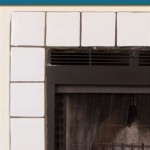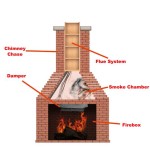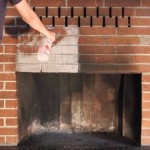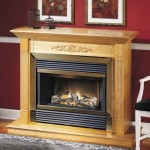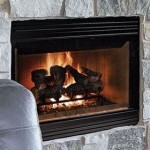Freestanding Gas Stove Fireplaces: A Comprehensive Guide
Freestanding gas stove fireplaces offer a blend of aesthetic appeal, functional heating, and convenient operation, making them a popular choice for homeowners seeking a supplemental or primary heat source. These appliances mimic the look of traditional wood-burning stoves but utilize the efficiency and cleanliness of natural gas or propane. This article explores the various aspects of freestanding gas stove fireplaces, including their benefits, types, considerations for installation, maintenance requirements, and factors influencing their cost.
A freestanding gas stove fireplace, in its simplest form, is a self-contained heating unit designed to sit directly on the floor, requiring minimal structural modifications for installation. Unlike built-in fireplaces or fireplace inserts, freestanding models do not necessitate existing chimneys or hearths, offering greater flexibility in placement within a home. They are typically vented, meaning they require a flue or vent pipe to exhaust combustion byproducts safely outside the building. However, vent-free models are also available, albeit with specific safety and regulatory considerations.
The visual allure of gas stove fireplaces stems from their design, which often replicates the classic aesthetic of wood-burning stoves. Manufacturers offer a wide range of styles, from traditional cast iron models with intricate detailing to more contemporary designs featuring clean lines and modern finishes. This versatility allows homeowners to select a stove that complements their existing décor and personal preferences. The realistic flame patterns, often enhanced by ceramic logs or other decorative media, contribute to the ambiance of a traditional fireplace without the associated mess and effort.
Operational convenience is a significant advantage of gas stove fireplaces. They typically feature push-button ignition or remote control operation, allowing for instant heat at the touch of a button. Temperature can be precisely adjusted to maintain a comfortable room temperature, and some models offer programmable thermostats for automated operation. This convenience contrasts sharply with the manual labor involved in wood-burning fireplaces, which require wood procurement, stacking, and stoking.
Benefits of Freestanding Gas Stove Fireplaces
Freestanding gas stove fireplaces offer a multitude of benefits that contribute to their widespread appeal. These advantages range from energy efficiency and ease of use to aesthetic enhancements and environmental considerations.
Firstly, energy efficiency is a key advantage. Gas stoves are generally more efficient than traditional wood-burning fireplaces, converting a higher percentage of fuel into usable heat. This translates into lower heating bills and reduced energy consumption. Moreover, gas stoves burn cleanly, producing fewer emissions compared to wood-burning appliances. This contributes to improved indoor air quality and reduced environmental impact.
Secondly, the ease of use and convenience offered by gas stoves are undeniable. The instant on/off functionality eliminates the need for kindling, wood, or constant monitoring. Temperature control is precise and readily adjustable, allowing for consistent and comfortable heating. Many models come equipped with remote controls, enabling users to adjust the flame height and temperature from anywhere in the room. The absence of ash and creosote build-up minimizes maintenance requirements, simplifying the overall ownership experience.
Thirdly, the aesthetic appeal of freestanding gas stove fireplaces enhances the ambiance of any room. The realistic flame patterns and customizable designs allow homeowners to create a cozy and inviting atmosphere. The availability of various styles, from traditional to contemporary, ensures that there is a gas stove to suit any décor. The visual warmth and comforting glow of the flames contribute to a relaxing and enjoyable living space. Furthermore, the relatively simple installation process allows for placement in various locations within a home, providing greater flexibility in interior design.
Types of Freestanding Gas Stove Fireplaces
The market offers a diverse range of freestanding gas stove fireplaces, categorized primarily by their venting system and fuel type. Understanding these differences is crucial for selecting the appropriate model for a specific home and heating needs.
Vented gas stoves, also known as direct-vent stoves, are the most common type. These stoves utilize a sealed combustion system that draws air from outside the home for combustion and vents exhaust gases directly outdoors through a dedicated vent pipe. Direct-vent systems are highly efficient and minimize the risk of indoor air pollution. They are generally considered the safest option due to their sealed combustion process. The vent pipe can be routed horizontally through a wall or vertically through the roof, providing flexibility in installation.
Vent-free gas stoves, also referred to as ventless stoves, do not require a flue or vent pipe. They operate by burning gas so efficiently that the exhaust gases are deemed safe for release into the indoor environment. However, these stoves are subject to strict regulations and are often prohibited in certain jurisdictions due to concerns about indoor air quality. They require oxygen depletion sensors (ODS) to shut off the gas supply if oxygen levels in the room become dangerously low. Vent-free stoves are generally less efficient than vented models and may contribute to increased humidity levels in the home. Their use should be carefully considered and in compliance with local building codes.
Fuel type is another important consideration. Natural gas stoves are typically connected to an existing natural gas line, providing a convenient and cost-effective fuel source. Propane stoves, on the other hand, require a propane tank, which can be located either inside or outside the home. Propane stoves offer greater flexibility in terms of location, as they do not rely on a piped gas supply. However, propane tanks require periodic refilling, which can add to the overall cost of operation. The choice between natural gas and propane depends on the availability of gas lines and personal preferences regarding fuel storage and cost.
Installation and Maintenance Considerations
Proper installation and regular maintenance are essential for ensuring the safe and efficient operation of a freestanding gas stove fireplace. Ignoring these aspects can lead to performance issues, safety hazards, and reduced lifespan of the appliance.
Installation should always be performed by a qualified and licensed professional. This ensures that the stove is properly connected to the gas supply, vented correctly (if applicable), and meets all local building codes and safety regulations. Improper installation can result in gas leaks, carbon monoxide poisoning, and fire hazards. The installation process typically involves running a gas line to the stove location, installing the vent pipe (if required), connecting the stove to the gas supply, and testing the system for leaks and proper operation. A professional installer will also ensure that the stove is properly positioned and secured to prevent tipping or movement.
Regular maintenance is crucial for maintaining the performance and longevity of the gas stove. This includes annual inspections and cleaning. A qualified technician should inspect the stove for any signs of damage, wear, or corrosion. The burner assembly should be cleaned to remove any debris or obstructions that could affect flame quality. The vent pipe should be inspected for blockages or leaks. The pilot light and thermocouple should be checked for proper function. Any necessary repairs or replacements should be performed promptly to prevent further damage or safety hazards.
Homeowners can also perform some basic maintenance tasks, such as cleaning the glass door with a non-abrasive cleaner and dusting the exterior of the stove. It is important to follow the manufacturer's instructions for cleaning and maintenance. Never use flammable liquids or harsh chemicals to clean the stove. Regularly check the air vents surrounding the stove to ensure they are clear of obstructions. It is also essential to have a working carbon monoxide detector in the home, especially if using a vent-free gas stove.
Factors Affecting Cost
The cost of a freestanding gas stove fireplace can vary significantly depending on several factors, including the model's size, features, brand, venting system, and installation expenses. Understanding these factors can help homeowners budget effectively and make informed purchasing decisions.
The size and heating capacity of the stove are primary determinants of price. Larger stoves with higher BTU (British Thermal Unit) output typically cost more than smaller models. Stoves with advanced features, such as remote control, programmable thermostats, and decorative options, also command higher prices. The brand reputation and quality of materials used in construction can also influence the cost. Well-established brands known for their durability and performance often charge a premium.
The venting system significantly affects the overall cost. Direct-vent stoves, while generally safer and more efficient, require the installation of a vent pipe, which adds to the expense. The length and complexity of the vent run can further increase the installation cost. Vent-free stoves, while eliminating the need for a vent pipe, may be subject to higher regulatory scrutiny and may not be permitted in all areas. The cost of a propane tank and its installation should also be factored in if choosing a propane-fueled stove.
Installation costs can vary depending on the complexity of the installation process and the local labor rates. Factors such as the distance from the gas supply, the need for new gas lines, and the accessibility of the installation location can all impact the cost. Obtaining quotes from multiple qualified installers is recommended to ensure a competitive price. Ongoing maintenance costs, including annual inspections and potential repairs, should also be considered when budgeting for a gas stove fireplace. Comparing different models and considering long-term costs can help homeowners make a cost-effective decision.

Freestanding Gas Burning Stoves Sierra Hearth And Home

Enviro S Gas Westley Cast Iron Stove

Gas Stoves Freestanding Stove Fireplaces Napoleon

Enviro Berkeley Freestanding Gas Stove Fireplaces By Cameron

Enviro S Gas S50 Stove

Gas Stoves Made In Usa Lopi

Valor Freestanding Gas Fireplaces Patio Palace

Freestanding Gas Stoves Friendly Fires

Valor Madrona Freestanding Gas Stove Bob S Intelligent Heating Decor

Gas Stoves Fireplace And Stove The Hearth Doctor Inc
Related Posts



